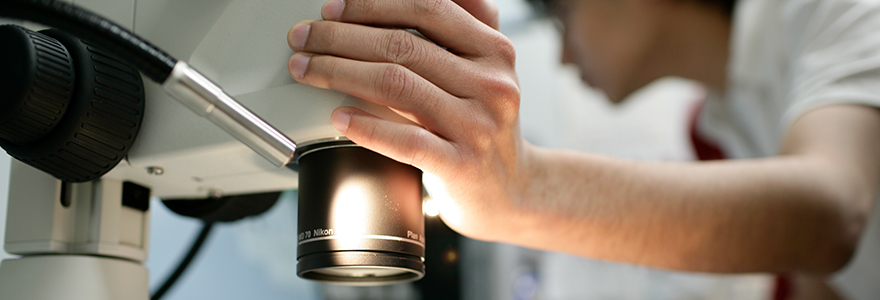Research

The Roth | McFarlane Hand & Upper Limb Centre (HULC) has an active basic science and clinical research program and since its inception in 1992, the research activities at HULC have gained an international reputation. Researchers from HULC frequently attend national and international meetings to present their findings. Research is concentrated in three associated laboratories, staffed in a multidisciplinary collaborative fashion by surgeons, PhD-level scientists, graduate students, residents, undergraduate students and laboratory technicians.
The Bio-Engineering Research Laboratory
This laboratory is directed by Drs. Johnson, King, and Kadar, whose specifics can be viewed on their webpages on this site. The Laboratory is housed in the Lawson Health Research Institute. The major focus of the Laboratory is on engineering-based biomechanical investigation aimed at improving the treatment of disorders of the upper extremity. Ongoing studies examine implant design and fixation, fracture stabilization, ligament repair techniques and the causes of arthritis. Facilities include a materials testing machine, hand, elbow and wrist joint-loading simulators, thin-film pressure sensing transducers, and a wide variety of laboratory-made analytical systems. Projects have led to clinical adoption of new treatment methods and the design (with industrial partners) of surgical devises and joint implants. Funding for these research efforts is by several major granting agencies, including the Canadian Institutes of Health Research.
The Clinical Outcomes Research Laboratory
This lab is directed by Drs. MacDermid and Grewal, whose specifics can be viewed on their webpages on this site. The Laboratory is housed in the Lawson Health Research Institute. The major focus of the lab is on clinical questions related to enhancing prevention, assessment and management of musculoskeletal disorders and related work-disability of the upper extremity. A multitude of ongoing studies examines distal radius fractures, shoulder arthroplasty, elbow reconstruction and other clinical entities. Funding of this lab is by the Canadian Institutes of Health Research.
The Surgical Mechatronics Research Laboratory
This lab is directed by Dr. Louis Ferreira, whose specifics can be viewed on his webpage on this site. His research is primarily in the field of Medical Mechatronics, with special interest in orthopaedic surgery and the biomechanics of major joints. Another area of investigation is patient-specific 3D-printed splints/braces for both chronic use and post-surgical healing. Projects are generally performed with the collaboration of surgeons at the Lawson Health Research Institute. Significant recent contributions are in the field of Digital Volume Correlation (DVC) of the shoulder, using custom hexapod robotics merged with high-resolution microCT imaging. The objective is to investigate osteoarthritic bone in the context of joint replacement surgeries.
The Musculoskeletal Biomechanics Research Laboratory
This lab is directed by Dr. Emily Lalone, whose specifics can be viewed on her webpage on this site. The lab focuses on integrating biomechanical and imaging innovations to understand the relationship between joint structure and function, and to develop outcome measures that predict patient outcomes. Objectives include developing medical and assistive devices and innovations that offer new diagnostic, treatment and therapeutic technologies that improve health, quality of life and mobility. Research projects conducted in the lab employ interdisciplinary and translational research which involve applying research from Biomedical Engineering and Medical Imaging to Orthopedic Surgery,








